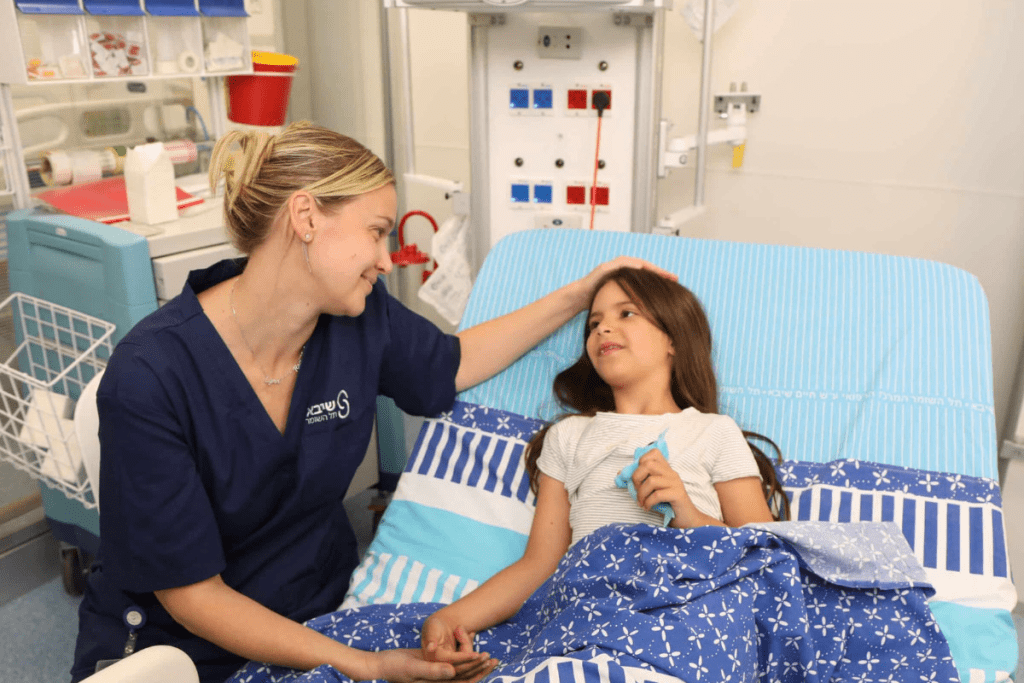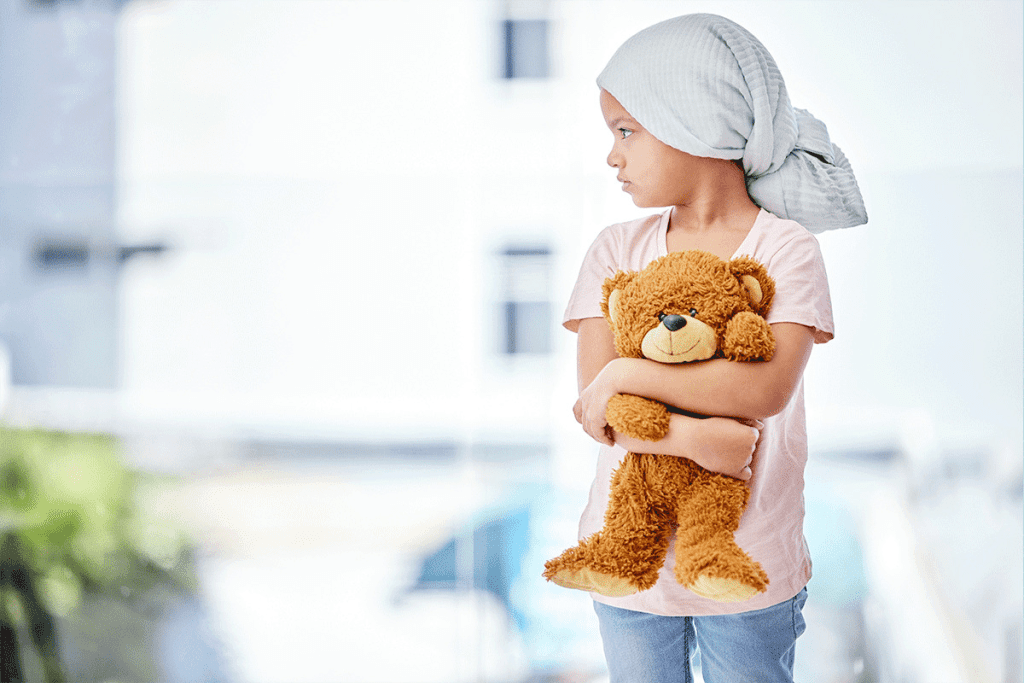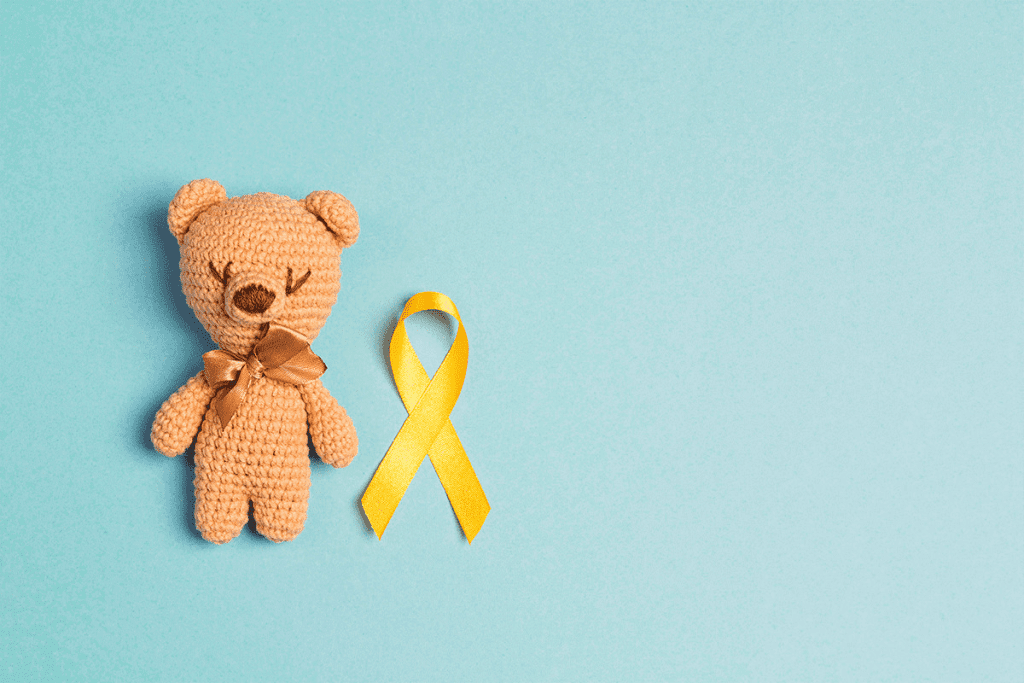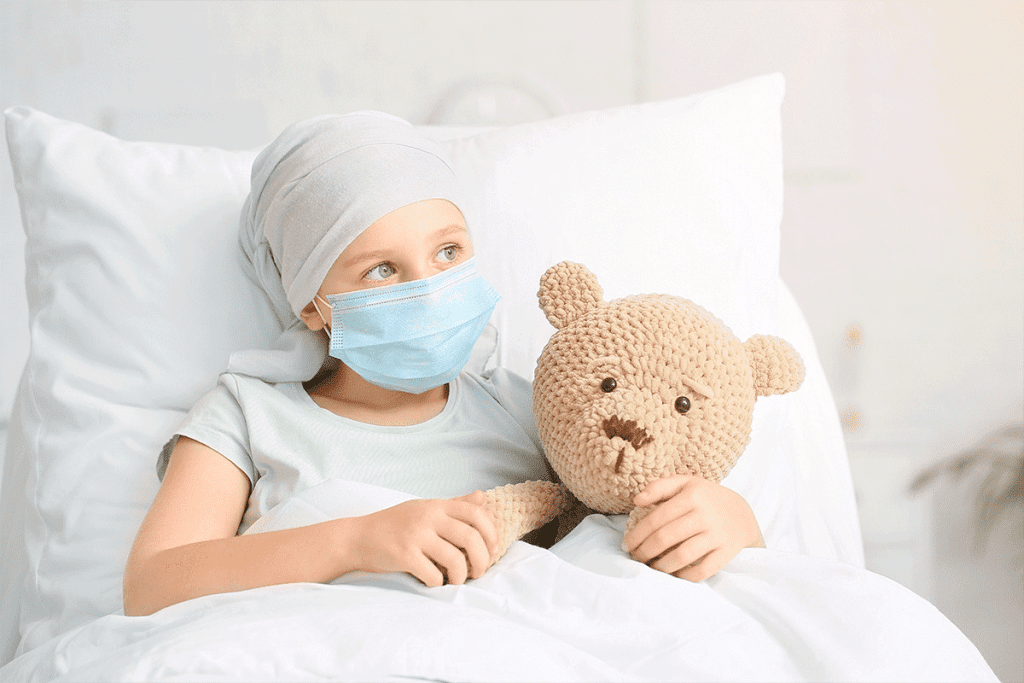Last Updated on November 12, 2025 by

When a child is diagnosed with cancer, finding the best treatment is key. Thanks to pediatric oncology, more kids are surviving. But, every child’s needs are different, making treatment a big challenge. The right treatment for childhood cancer depends on the cancer type and stage. The American Cancer Society says each plan is made just for the child. It considers the cancer type, how far it has spread, and the child’s health. Family wishes are also important.
There are many ways to treat childhood cancer. These include surgery, chemotherapy, and radiation. We’ll look at these options closely, focusing on pediatric cancer care.
It’s important to understand childhood cancer well to find good treatments. This disease affects kids from birth to when they’re teenagers. It’s a big health problem all over the world.
Childhood cancer happens in kids under 20. It includes types like leukemias, brain tumors, and lymphomas. Knowing how common it is helps us see its big impact on health.
Every year, about 400,000 kids and teens under 19 get cancer. This shows we need strong healthcare to help these young patients.
The numbers on childhood cancer are scary. It’s a top cause of death in kids. It also affects families and communities a lot. The World Health Organization says cancer is a big killer of kids worldwide.
Key global statistics include:

In the U.S., looking at how many kids get cancer helps us see how well we’re doing. The National Cancer Institute says in 2025, about 9,550 new cases will be found in kids from birth to 14.
Mortality rates have been going down thanks to better treatments. But, cancer is a big killer of kids. Knowing these numbers helps us plan better and save more lives.
“The progress made in treating childhood cancer is a testament to the dedication of healthcare professionals and researchers. Continued efforts are needed to further reduce mortality rates and improve the quality of life for survivors.”
By looking at what childhood cancer is, its global numbers, and U.S. rates, we get a full picture. This knowledge is key to making treatments better and helping kids with cancer live better lives.
It’s important to know the common types of childhood cancer for early detection and treatment. Childhood cancer includes many types, each with its own traits and treatment needs. The National Cancer Institute says the top types in kids ages 0 to 14 are leukemias, brain tumors, and lymphomas.
Leukemia is the leading cancer in kids, making up 30% of all childhood cancers. It affects the blood and bone marrow, causing abnormal white blood cells. Acute lymphoblastic leukemia (ALL) is the most common, making up 80% of cases.
Brain and CNS tumors are the second most common in kids. These can be benign or malignant and occur in various parts of the brain or spinal cord. Medulloblastoma and gliomas are common brain tumors in children.
Lymphomas are cancers of the lymphatic system, the third most common in kids. Hodgkin lymphoma and non-Hodgkin lymphoma are the main types, with non-Hodgkin being more common in children.
Other important pediatric cancers include:

Spotting the signs of childhood cancer early can make a big difference. It’s key to catch it early. Knowing the warning signs helps get medical help fast.
Childhood cancer often shows up with symptoms that look like common childhood illnesses. But, there are specific signs parents and caregivers should watch for:
The American Cancer Society says being alert to these symptoms is important. It’s vital to see a doctor if these signs don’t go away.

If a child shows any of these early signs, get medical help right away. A doctor can check the symptoms and decide what to do next.
Parents should worry if their child has:
Trust your instincts as a parent. If something feels off, get medical advice.
The journey to diagnose childhood cancer includes many tests. When a child shows suspicious symptoms, doctors do a full check-up. Then, they might do blood tests, imaging studies, and biopsies.
Knowing about the diagnostic process can help parents during this tough time. It’s important to work with a team of healthcare experts. This ensures the right diagnosis and treatment plan.
Choosing the right treatment for childhood cancer involves looking at many things. We carefully plan each treatment to help the child get the best results.
The type and stage of cancer are key in picking a treatment. Different cancers, like leukemia or brain tumors, need different plans. The cancer’s stage, or how far it has spread, also affects the treatment choice.
A child’s age and how they’re developing are important in treatment choices. Young kids might need special care because their bodies are growing. We look at the child’s age and health to make the best plan.
Genetic and molecular markers give us clues about the cancer. New tests help find specific genetic changes. This information helps us choose the right treatment.
We also think about what the family wants and the child’s quality of life. We talk with families to understand their values and concerns. This helps us make a treatment plan that fits their needs and improves the child’s life.
By looking at all these factors, we can create a treatment plan that meets each child’s unique needs.
Surgery is a key part of treating pediatric cancer. It offers hope and healing to young patients. The American Cancer Society says surgery removes tumors or affected tissues. The surgery type depends on the tumor’s location and size.
We will look at the surgical techniques used in pediatric oncology. We will see why they are important and the special considerations for children.
Tumor resection is a common surgery for pediatric cancer. The goal is to remove the tumor completely. This includes a margin of healthy tissue to get rid of all cancer cells.
Advanced imaging techniques like MRI and CT scans help plan the surgery. They ensure precision.
There are several techniques for tumor resection, including:
Minimally invasive surgery (MIS) is growing in importance in pediatric oncology. MIS uses smaller incisions, specialized instruments, and a camera. This approach can reduce recovery time, minimize scarring, and decrease the risk of complications.
Some benefits of MIS in pediatric cancer surgery include:
When performing surgery on children, several unique considerations must be taken into account. Children’s bodies are growing, and their tissues are more delicate. Pediatric surgeons must be skilled in handling these differences to ensure the best outcomes.
Key considerations include:
Childhood cancer treatment often includes chemotherapy. This is a key part that needs careful dosing and side effect management. Chemotherapy is used to treat many types of childhood cancer, like leukemia and lymphoma. Its goal is to kill cancer cells or stop them from growing.
Childhood cancer treatment plans vary based on the cancer type and stage. Combination chemotherapy, which uses multiple drugs, is often more effective. The drugs and treatment length are chosen based on the child’s needs.
For example, treating acute lymphoblastic leukemia (ALL) usually involves a mix of chemotherapy drugs. This treatment can last months or years. It includes different phases, each with its own chemotherapy plan.
Dosing chemotherapy in children is complex. It depends on age, weight, and body size. Pediatric chemotherapy dosing is based on body surface area (BSA). This ensures children get the right dose for their size.
Chemotherapy can cause side effects like nausea and hair loss in children. Supportive care measures are key to managing these. This includes anti-nausea drugs and nutritional support.
For instance, antiemetic drugs have greatly reduced nausea and vomiting in children. Nutritional counseling also helps keep children’s nutritional levels up during treatment.
Recent advances in pediatric chemotherapy have improved treatment outcomes. Targeted therapies and immunotherapies are being used more. They offer hope for children with relapsed or refractory disease.
CAR T-cell therapy, a type of immunotherapy, has shown great promise in treating relapsed ALL. Research is ongoing to improve these new therapies and integrate them into current treatments.
Radiation therapy for kids with cancer has changed a lot. It now offers treatments made just for them. This is key for treating some childhood cancers, like brain tumors and lymphomas, says the American Cancer Society.
Getting precise is key in treating kids with radiation. Methods like IMRT and SBRT give high doses to tumors but protect healthy tissues. This makes treatments more effective and less likely to harm kids long-term.
We use top-notch imaging to target tumors accurately. MRI and CT scans help us plan treatments. This precision is vital in pediatric oncology, aiming to cure cancer without harming the child’s life quality.
Proton therapy uses protons to kill cancer cells, unlike X-rays. It’s great for kids because it’s more precise, reducing harm to healthy tissues. This is a big plus for tumors near important areas, like the brain or spine.
Proton therapy in kids is showing great results. It seems to lower long-term side effects compared to traditional radiation. There’s growing evidence it’s good for certain brain tumors and other cancers in kids.
Radiation therapy is powerful against childhood cancer but can cause lasting problems. These include secondary cancers, endocrine issues, and brain problems. We use precise methods and proton therapy to lessen these risks.
Watching kids closely after radiation is key. We work with families to catch any late effects early. This helps us give each child the care they need to do well after treatment.
Immunotherapy and targeted treatments are changing how we fight childhood cancer. They use the body’s immune system and target cancer cells. This makes treatments more precise and less harmful.
CAR T-cell therapy is a big step forward in fighting cancer. It takes T-cells from the blood, changes them to fight cancer, and puts them back in. This therapy has shown great promise in treating some childhood cancers. It’s being tested in many clinical trials.
The process of CAR T-cell therapy is detailed. It involves several steps from getting the cells to putting them back in. Patients need careful watching for side effects like cytokine release syndrome. Despite challenges, it offers hope for kids with hard-to-treat cancers.
Monoclonal antibodies are another promising treatment for childhood cancer. These lab-made molecules target specific proteins on cancer cells. They can be used alone or with other treatments to make them work better.
Precision medicine tailors treatment to each patient’s cancer. It looks at the genetic and molecular profile of the tumor. Then, it chooses targeted therapies to fight the cancer.
In pediatric oncology, precision medicine is key. Cancers in kids often have unique genetic profiles. Research is ongoing to understand these profiles better and find new treatments.
Clinical trials are vital for advancing childhood cancer treatments. They test new therapies, including immunotherapy and targeted treatments. They give kids with cancer access to new treatments that might not be available yet.
The National Cancer Institute and others support many pediatric cancer trials. These trials explore new drug combinations and treatments. Families should talk to their healthcare team about the benefits and risks of joining a trial.
For kids with advanced cancers, stem cell transplantation is a hope for a new start. This method replaces bad stem cells with good ones. It can come from the patient (autologous) or a donor (allogeneic).
Choosing between autologous and allogeneic stem cell transplantation depends on many things. These include the cancer type, the patient’s health, and if a donor is available. Autologous uses the patient’s own stem cells, collected and stored for later use.
Allogeneic uses a donor’s stem cells, which can fight cancer better. The American Cancer Society says both methods have their benefits, chosen based on the patient’s needs.
The transplant process is complex. It includes preparing the bone marrow with chemotherapy or radiation, then infusing new stem cells. After, the patient must recover carefully, watched for signs of success and complications.
Long-term monitoring is key after a transplant. Patients are watched for signs of cancer coming back, graft-versus-host disease, and other treatment side effects. This care helps catch problems early, improving life quality and survival chances.
We know stem cell transplantation is a big step for kids with advanced cancers and their families. We provide full care and support during and after the transplant. Our goal is to help these children live healthier lives.
Childhood cancer care varies worldwide, with big differences in treatment success. The International Society of Pediatric Oncology says these gaps are mainly because of unequal access to care.
Rich countries have better healthcare, leading to better cancer treatment for kids. Poor countries struggle with less access to needed care. This leads to big differences in how well kids survive cancer.
In wealthy countries, kids with a common leukemia have a 90% chance of living five years. But in poor countries, this number drops to 20-30% because of limited care.
In poor countries, getting a cancer diagnosis on time is hard. Many kids are diagnosed too late. Then, getting the right treatment is hard because of money and lack of facilities.
There’s also a lack of doctors trained in kids’ cancer. This makes it tough to give kids the care they need.
Many groups are working to close the gap in cancer care for kids. The World Health Organization and others are helping. They aim to make more care available in poor areas.
They’re training doctors, giving out medicines, and helping build cancer units in poor countries.
Good cancer care for kids needs a team of doctors. This team includes oncologists, surgeons, and more. Starting these teams in poor countries is hard but key to better care.
By using team care and working together globally, we can help more kids survive cancer. This will make a big difference worldwide.
Advances in treating childhood cancer have changed the face of pediatric oncology. They have greatly improved survival rates and the quality of life for young patients. At livhospital.com, we aim to use the latest, evidence-based treatments. We strive to be leaders in top-notch pediatric oncology care.
The National Cancer Institute says new treatments have greatly boosted survival rates. They are working on making treatments more effective and less harmful. It’s key to keep improving childhood cancer care and to address care gaps worldwide. We must work together, including healthcare teams, researchers, and families touched by childhood cancer.
By pushing forward in treating childhood cancer, we aim for a future where every child gets the best care. This care should be available everywhere, no matter where you live or your family’s income. Our dedication to outstanding care and research will help make progress. This will lead to better outcomes for kids with cancer all over the world.
Childhood cancer types include leukemia, brain tumors, and lymphomas. Leukemia is the most common, making up a big part of pediatric cancer cases.
Signs of childhood cancer include tiredness, weight loss, fevers, and bleeding. Parents should watch for these and get medical help if they don’t go away.
Doctors use imaging, biopsies, and lab tests to find childhood cancer. The process depends on the suspected cancer type and the child’s health.
Treatment depends on the cancer type, stage, and the child’s age and health. A team of doctors creates a treatment plan that fits the child’s needs.
Treatments include surgery, chemotherapy, radiation, immunotherapy, and stem cell transplants. The choice depends on the cancer type and the child’s health.
Chemotherapy kills cancer cells or stops them from growing. It’s often used with other treatments like surgery and radiation.
Proton therapy targets cancer cells precisely, reducing harm to healthy tissues. It’s good for kids because it may lower long-term side effects.
CAR T-cell therapy modifies T-cells to fight cancer. It’s a new treatment for some childhood cancers, like leukemia and lymphoma.
Children in poor countries often can’t get cancer care. Efforts are being made to improve care worldwide through international help and teamwork.
Awareness helps find cancer early, supports families, and pushes for better treatments. It’s key to fighting childhood cancer globally.
Pediatric oncology is the study and treatment of cancer in kids. Doctors in this field work together to care for children with cancer.
Families can offer emotional support, help with daily tasks, and speak up for their child’s needs. A strong family network is vital during treatment.
Subscribe to our e-newsletter to stay informed about the latest innovations in the world of health and exclusive offers!